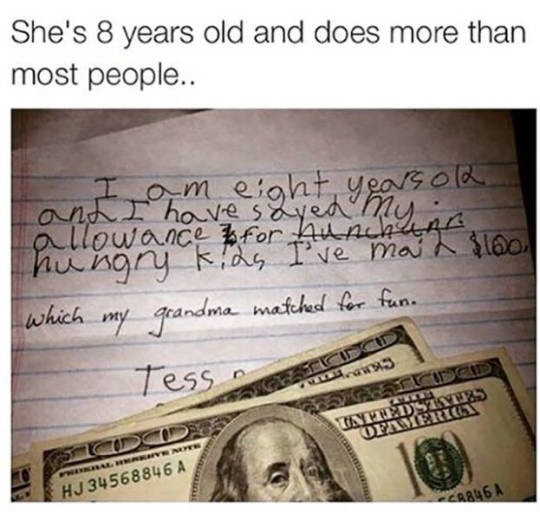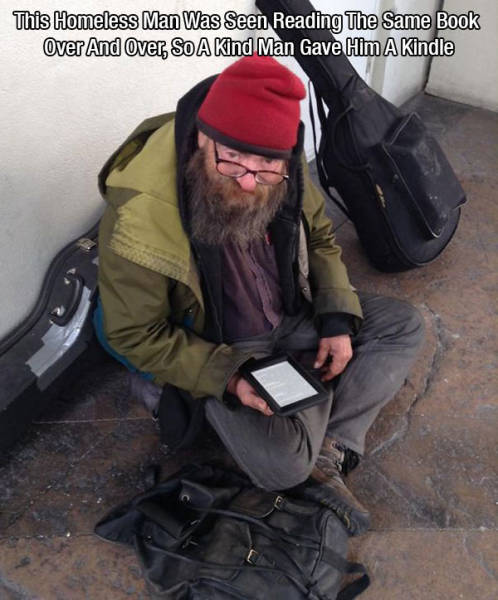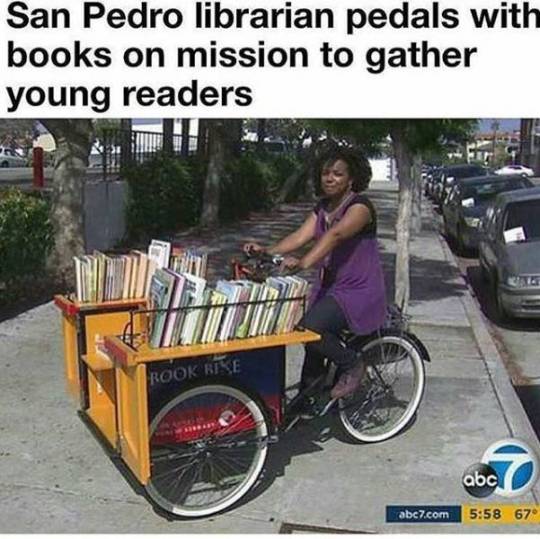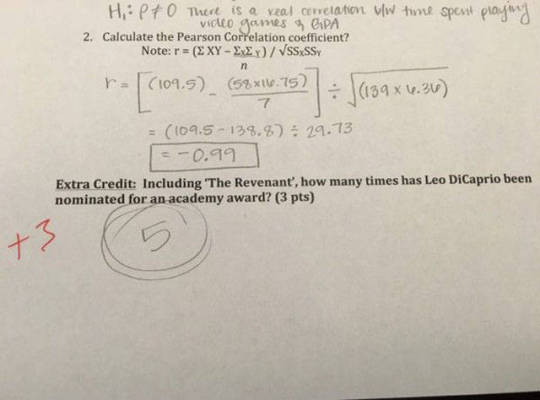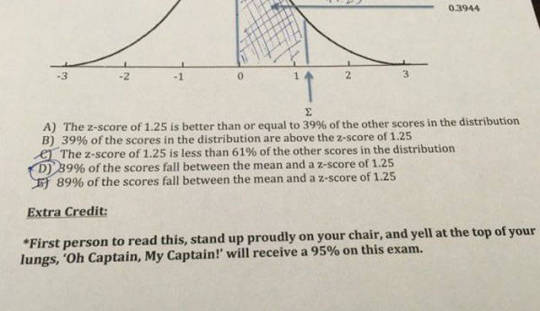Link
In the early Nineties, roughly around 1994, a now 52-year-old man named Don ordered two copies of a brand new video for the rental store his uncle owned and he helped to run.
“I had to handle the two copies we owned dozens of times over the years,” says Don (who wishes to give his first name only). “And I had to watch it multiple times to look for reported damages to the tape, rewind it and check it in, rent it out, and put the boxes out on display for rental.”
In these ways, the film Don is speaking of is exactly like the hundreds of others in his uncle’s shop. In one crucial way, however, it is not. The movie that Don is referring to doesn’t actually exist.
This is fascinating. I asked my roommate (before referencing this article), “do you remember an early 90′s movie with Sinbad as a genie?” and she said “Yeah, Shazam.”
49 notes
·
View notes
Link
0 notes
Video
youtube
Need to remember something? Better draw it, study finds
Researchers at the University of Waterloo have found that drawing pictures of information that needs to be remembered is a strong and reliable strategy to enhance memory.
“We pitted drawing against a number of other known encoding strategies, but drawing always came out on top,” said the study’s lead author, Jeffrey Wammes, PhD candidate in the Department of Psychology. “We believe that the benefit arises because drawing helps to create a more cohesive memory trace that better integrates visual, motor and semantic information.”
The study, by Wammes, along with fellow PhD candidate Melissa Meade and Professor Myra Fernandes, presented student participants with a list of simple, easily drawn words, such as “apple.” The students were given 40 seconds to either draw the word, or write it out repeatedly. They were then given a filler task of classifying musical tones to facilitate the retention process. Finally, the researchers asked students to freely recall as many words as possible from the initial list in just 60 seconds.
The study appeared in the the Quarterly Journal of Experimental Psychology.
“We discovered a significant recall advantage for words that were drawn as compared to those that were written,” said Wammes. “Participants often recalled more than twice as many drawn than written words. We labelled this benefit ‘the drawing effect,’ which refers to this distinct advantage of drawing words relative to writing them out.”
In variations of the experiment in which students drew the words repeatedly, or added visual details to the written letters, such as shading or other doodles, the results remained unchanged. Memory for drawn words was superior to all other alternatives. Drawing led to better later memory performance than listing physical characteristics, creating mental images, and viewing pictures of the objects depicted by the words.
“Importantly, the quality of the drawings people made did not seem to matter, suggesting that everyone could benefit from this memory strategy, regardless of their artistic talent. In line with this, we showed that people still gained a huge advantage in later memory, even when they had just 4 seconds to draw their picture,” said Wammes.
While the drawing effect proved reliable in testing, the experiments were conducted with single words only. Wammes and his team are currently trying to determine why this memory benefit is so potent, and how widely it can be applied to other types of information.
490 notes
·
View notes
Photo

(Image caption: CaptionThe subway map that participants navigated. The map was rotated and the line colors and station names were shuffled between participants. Participants only saw the map during training. Credit: Balaguer et al./Neuron 2016)
How your brain learns to ride the subway – and why AI developers care
In machine learning, a programmer might develop an AI that can calculate all possible consequences of a single action. Humans, however, don’t have the same raw computational power; we have to efficiently create and execute a plan. We mentally invent different “layers” to organize our actions and then think about the higher levels rather than individual steps, according to a Neuron study from members of Google DeepMind and the University of Oxford publishing May 18.
“The idea is basically to understand how humans or animals make long-term decisions,” says Jan Balaguer, a PhD student at University of Oxford and member of Google DeepMind. “We’re interested in trying to find machine-learning solutions to difficult tasks and real-life problems. Quite often it can be useful to draw inspiration from neuroscience.”
Balaguer and his colleagues used a navigational game as a proxy to decode the human brain’s decision-making processes. On a virtual subway system analogous to the London Underground, each station stop represented an individual step, while the different colored subway lines represented a higher level of the hierarchy. Twenty-two participants were trained on the game and then given a destination station as a goal, and played while in an fMRI scanner.
The researchers examined whether participants focused more on the subway lines or on the individual stations while navigating in the game. The team found that, generally, brain activity and response time increased with the number of line changes standing between participants and their destinations, rather than with the number of stations themselves. The areas in the brain linked to this type of decision making were the dorsal portion of the medial prefrontal cortex, which is known to support higher cognitive functions such as planning, and the premotor cortex, which is more involved in the execution of real or imaginary movements.
“We show, in a more straightforward and direct manner than previous studies, that there are hierarchical representations reflected in the brain,” says Balaguer.
However, there were some parts of the brain that became more active as participants inched closer to achieving their goal, with fewer stations left on a single line: the ventromedial prefrontal cortex and the hippocampus. In previous work, the hippocampus has been shown to react to proximity to a given goal.
Overall, Balaguer says, “We want to see how the human brain implements things like hierarchical structures in order to design more clever algorithms. In machine learning, having a hierarchical representation for decision making might be helpful or harmful depending on whether you choose the right hierarchy to implement in the first place.”
98 notes
·
View notes
Link
8 notes
·
View notes
Photo

My cousin, ashamed after building a chair from IKEA.
753K notes
·
View notes
Link
15 notes
·
View notes
Video
youtube
What Harnessing the Positive Side of Stress Can Do for Students
There is a lot of research about how stress negatively impacts health, cognitive functioning and self-control, but less often discussed are how those findings change when people see their stress as a positive motivator. “In a number of situations, accepting and embracing the stress instead of trying to calm down helped students to do better,” said Kelly McGonigal, a health psychologist and lecturer at Stanford University at a Learning and the Brain conference on mindsets.
“There is almost no relationship between the amount of stress you are under and your stress mindset,” said McGonigal. Learning tactics to change one’s outlook on stress can be beneficial for anyone. “How you think about stress seems to influence how you cope with stress,” she said.
462 notes
·
View notes
Photo
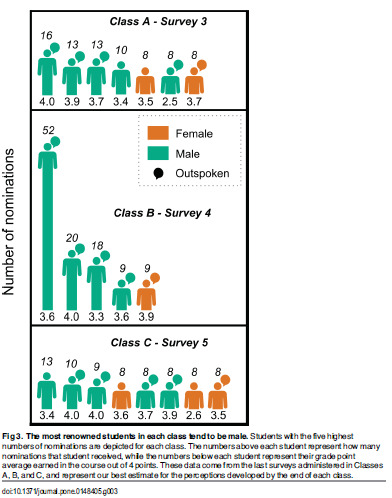
The remarkably different answers men and women give when asked who’s the smartest in the class
Anthropologist Dan Grunspan was studying the habits of undergraduates when he noticed a persistent trend: Male students assumed their male classmates knew more about course material than female students — even if the young women earned better grades.
“The pattern just screamed at me,” he said.
After surveying roughly 1,700 students across three biology courses, they found young men consistently gave each other more credit than they awarded to their just-as-savvy female classmates.
Men over-ranked their peers by three-quarters of a GPA point, according to the study, published this month in the journal PLOS ONE. In other words, if Johnny and Susie both had A’s, they’d receive equal applause from female students — but Susie would register as a B student in the eyes of her male peers, and Johnny would look like a rock star.
19 notes
·
View notes
Video
youtube
http://www.cultofpedagogy.com/jigsaw-teaching-strategy/
The Jigsaw Method is often used in my classroom because it helps students grow socially and emotionally along with cognitively. This video and the article accompanying it does a great job explaining this method, so you can add it to your tool belt of teaching techniques.
25 notes
·
View notes
Photo
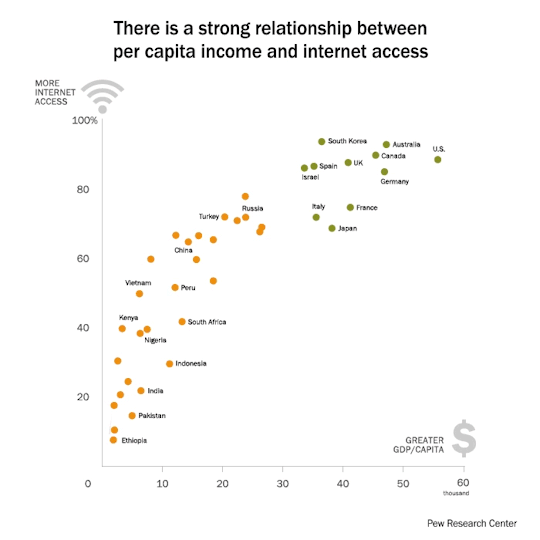
As the world becomes increasingly interconnected, both economically and socially, technology adoption remains one of the defining factors in human progress. To that end, there has been a noticeable rise over the past two years in the percentage of people in the emerging and developing nations surveyed by Pew Research Center who say that they use the internet and own a smartphone.
Smartphone Ownership and Internet Usage Continues to Climb in Emerging Economies
220 notes
·
View notes
Link
This is relevant to any beginning animator’s interests…
175 notes
·
View notes
Photo
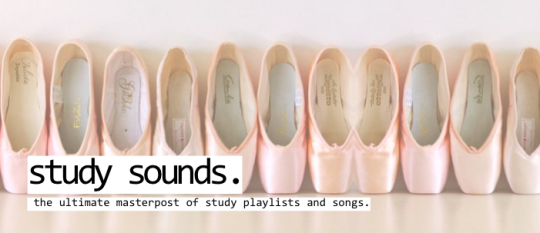
lots of people study best with sounds, while others may prefer white noise or just silence – it’s a trial and error of seeing what works best for you! this is an ultimate guide to study playlists and songs. you can find more study playlist posts / masterposts at my tag #study sounds (check it out here!)
what to know about studying with sounds
it’s super important that you know the pros and cons of studying with music, because it’s not right for everyone. music and studying research has shown that students who study listening to classical music tend to absorb more information, because classical music has the power to stimulate a student’s thinking. furthermore, studying with music can also keep a student awake by putting them into a rhythm that helps them to move through assignments and material.
however, some students may get distracted by the music and focus more on the sound than the assignment. while classical music and studying seem to be a nice combination, other sounds may not have the same effect. if you can’t focus when you study with music, it may not be the best option for you!
(source)
ideas for studying with sounds
you can use sounds while you study in a variety of different ways. some may work for you while others may not!
let your music determine your break times. if you enjoy making your own study playlists, make one that will last as long as the study period. if you intend to study for 40 minutes, make a 40 minute playlist so that when the music stops, you know it’s time for a break! (source)
use music to study for different subjects. for example, if you play one playlist every time you study for math, whenever you hear that playlist your brain will go into math mode. if you don’t use random music whenever you study, music can really help shape your studying routine.
blast during breaks. maybe it’s not necessary to study with music playing, but playing music during your break times is a great way to keep your energy up and refresh your mind from all that silence!! during your breaks you can grab a snack or stretch, and music will definitely set the mood.
sounds to study with
++natural
for those of you who work best with white noise, the sound of rain, coffee shop sounds, etc. a few great ones are:
coffitivity : recreates the sound of a cafe, there are three free options (morning murmur, lunctime lounge, and university undertones) as well as three options you’ll unlock if you purchase a premium for $9 a year.
noisli : awesome site that allows you to mix different sounds and create your perfect environment. a wide variety of nice sounds such as rain, wind, fire, cafe, and more.
rainymood : rain. lots of rain.
gentle rain : this is literally a 12 hour youtube video of soft rain white noise. on the video there’s links to other superlong rain youtube videos so you can check those out!
nature sounds : waterfalls, birds chirping.. if that’s what you like, this 8 hour youtube video is perfect for you (gosh, how do people have the patience to make these things!!)
calming seas : 11 hours of the sound of the nice calming sea. i really like this one :)
there are TONS of great playlists and such on youtube, i promise if you just search “calming sounds” you’ll find so many. again, it’s a matter of finding the sounds that work for you!
there are also tons of applications you can download on phones or ipads that have neat sounds. i like muji to relax (bonus points for muji) and natr (which has like.. 47 different nature sounds, if i’m counting correctly!).
++instrumental playlists
for those of you who prefer gorgeous instrumental tracks, i’ve got goodies for you too! 8tracks playlists galore. i know it looks like a lot to read through but i’ve added comments to each one just so you’ll know whether it’s what you’re looking for – instead of having to go through every single one.
work hard in silence, let success be your noise : this is a great playlist of 14 tracks, they’re all instrumental (majority piano) and there’s a good mix of different types of songs and tempos. the second track, comptine d'un autre été – l'après-midi is really high speed and energetic while song for sienna (solo piano version) is more gentle and soft. my favorite track on here is skinny love (piano) ohhhmygoodness.
the sky - the moon - the stars : this one’s more slow and relaxing (though waltz “swan lake” starts out with a bang and has more energy!) you’d totally be able to use it for nights where you’re having trouble sleeping as well. there are 8 tracks and like the first playlist, there’s a nice variety of sounds.
more coffee, please : this is a diverse mix of 11 tracks and i’m sure there’s something for everyone! this playlist starts off with black & yellow which is really high-energy and fun, great for if you want to jam while you study. take me to church is this beautiful but faster-moving violin and piano cover of take me to church by hozier. on the other hand, cristofori’s dream (live orchestral version) is really soft and slow. so this 8tracks list really has it all.
stillness of mind : really lovely playlist of 22 tracks that i think would be great for studying at night because it’s calming without making you super sleepy, while still having both fast and slow songs. talk about a balancing act! i like this one so much, especially at the ivy gate and love story.
for those times when even words are too much : 10 track playlist. a calming and quiet start with clair de lune. though that song’s more soft and sleepy, bach’s cello suite no.1 i-prelude will wake you right up, trust me! overall it’s a nice mix like the other playlists – not my personal favorite but it’s lovely so i’m i’m sure it’ll work for some of you! :)
the theory of everything : 17 gorgeous tracks. i. love. this. these aren’t classical piano songs or anything but they’re all so bright and beautiful!! warning though cassandra was a huge surprise to my ears because it got super loud. i love this playlist a lot though!!
mindscapes - music for writing : exactly what it sounds like! 12 really nice and calming tracks for writing. can’t say much about it honestly, i think it would be great background music for writing papers / essays. the creator of this playlist is a writer and you should check out her other playlists as well over here because there are playlists for action scenes, love stories, etc.
sense of wonder : this playlist of 8 tracks was actually created by a studyblr, @sleepy-study (who you should check out!) i think the playlist actually captures the name really well, it has this sense of wonderment to it – it’s calming and makes my head feel nice and light. great for if you’re feeling really stressed!
study for a minute : 9 tracks of classical music that are all super pretty and calming to listen to. i think this would be great for writing essays or reading! i listened to this while i was doing math homework and it didn’t work as well, but it’s up to you of course.
focus and study : a 15 track playlist that starts out beautifully with claire de lune, and continues on in instrumental glory!! i really love the second track, serenity spa. also, lots of people have said it’s worked for them in the comments, so i think this playlist could work for any subject!
notes for dreamers : 35 track playlist of gorgeous piano songs, “for peaceful studying, tea drinking, deep thinking, melancholic drifting and sleep reaching.” (i really loved their description) it’s a very lovely playlist and kind of makes me feel like i’m in a ballet, haha.
focus. : 34 lovely classical tracks to listen to for focus! i loooove this one for writing / english homework. le moulin (4th track) and new moon (The Meadow) especially pretty! and even though i love it, the theme from schindler’s list always makes me sniffly. the creator of the playlist also said to combine with noisli, which i haven’t tried, but you can give that a shot!
cuddles and studies : 9 really soft and gentle tracks, the “cuddles” part of the title is definitely there!! a really nice playlist, but not completely instrumental. some such as skinny love (birdy / bon iver acoustic cover) and atlas:taste have vocal parts, so it may not be the best for writing papers / essays. play this when you need a musical hug while you study – whether you’re stressed out or you just got a bad grade!
mango juice & coconuts : this is a youtube playlist with 378 songs, so i haven’t listened to the whole thing, but it’s a mix of unique sounds so it may appeal to you. they are also not all instrumental. however, even if you don’t play this while you study, some of these songs would be great to play during a study break to get you feeling relaxed and help you refocus!
can’t focus : this instrumental playlist is quite bright and upbeat, and is great for studying in the afternoon and night especially if you’re feeling a little drowsy. although it’s one of the softer and less energetic ones, i really like to dust! it has such a nice and steady flow that really gets your brain in the zone.
unfinished sentences : calming piano playlist with 12 tracks. really lovely and soft, kind of makes me feel like i’m being hugged. also, how could i not love a piano cover of not about angels? it’s literal perfection and sounds like raindrops on a windowpane but prettier. loooove.
keep calm and study on : a lovely instrumental (piano and violin) playlist of 14 tracks. i find this one really calming as well, and i like the violin covers especially because in study playlists there’s usually a lot of piano. also, the playlist was made by fellow studyblr, @theverbivorestudies !!
arise : another great playlist of 12 tracks including works by ravel, saint saens, bach, schubert, and brahms. i love the description the creator wrote - “a lovely playlist to motivate one to explore the uncertain depths of one’s world.” really nice playlist for the morning to start out your day, especially track 2 (ravel - assez vif, tres rythme)!!
vellichor : over five and a half hours of instrumental music for reading, writing, studying, or wandering through libraries and bookstores. 69 track playlist of gorgeous classical music! not much i can say, but it’s really great and i think this would work for nights where it’s hard to sleep as well!
everything classic : exactly what it sounds like. classical music at its best!! 30 great songs – i will say that dancers on a string (reprise) creeped me out (anyone else have songs that scare them?). but otherwise, if you want classical… this is the way to go.
& all the sweet serenity of books : first of all, isn’t the name of this playlist gorgeous ?!?! yesyes it is. i looove this one (song of the heart is so pretty!!) and would definitely recommend for reading and writing. it’s just *single tear slides down cheek* so beautiful.
if you didn’t find what you were looking for, do not lose hope! there are so many corners of the internet to find study music. there are plenty of other 8tracks playlists (i’ve put in the tags study and instrumental, since that’s usually what i use to find my study music) and of course, there are many options on youtube (there are a lot of really long options for a lonnnng study session but some can get kind of boring so i would recommend a playlist instead!)
this list is just a few of my favorites that i think will work! i hope this helps you when you use music to study and i hope you like some of the playlists i chose! :)
13K notes
·
View notes
Photo
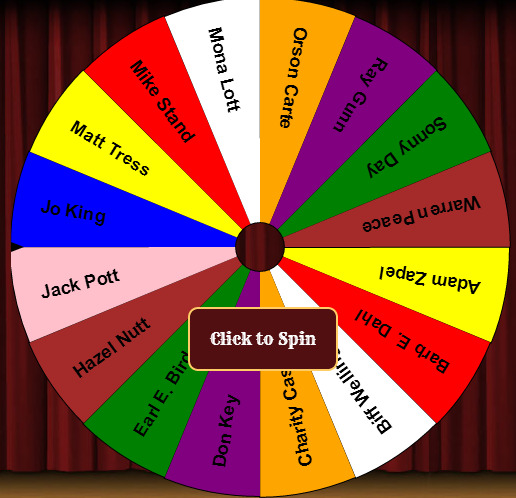
Click to Spin - A Fun and Free Random Name Picker
Random Name Picker is free to use and does not require a registration on Classtools.net. You can save your lists by assigning passwords to them. You can re-use your saved lists. The Random Name Picker wheel can be embedded into your blog or website. The Random Name Picker was written in HTML5 so that it will run in the browser of your iPad.
5 notes
·
View notes
Link
The definition of a micro school is still being hammered out, but a consensus seems to be coalescing around a few core details: Schools have no more than 150 students in grades K-12; multiple ages learn together in a single classroom; teachers act more as guides than lecturers; there’s a heavy emphasis on digital and project-based learning; and small class sizes, combined with those other factors, make for a highly personalized education.
While some tout micro schools as a model for bringing change to private education, others see them as a means to a different end—a low-risk way to pilot public charter schools before launching full-scale campuses.
7 notes
·
View notes

